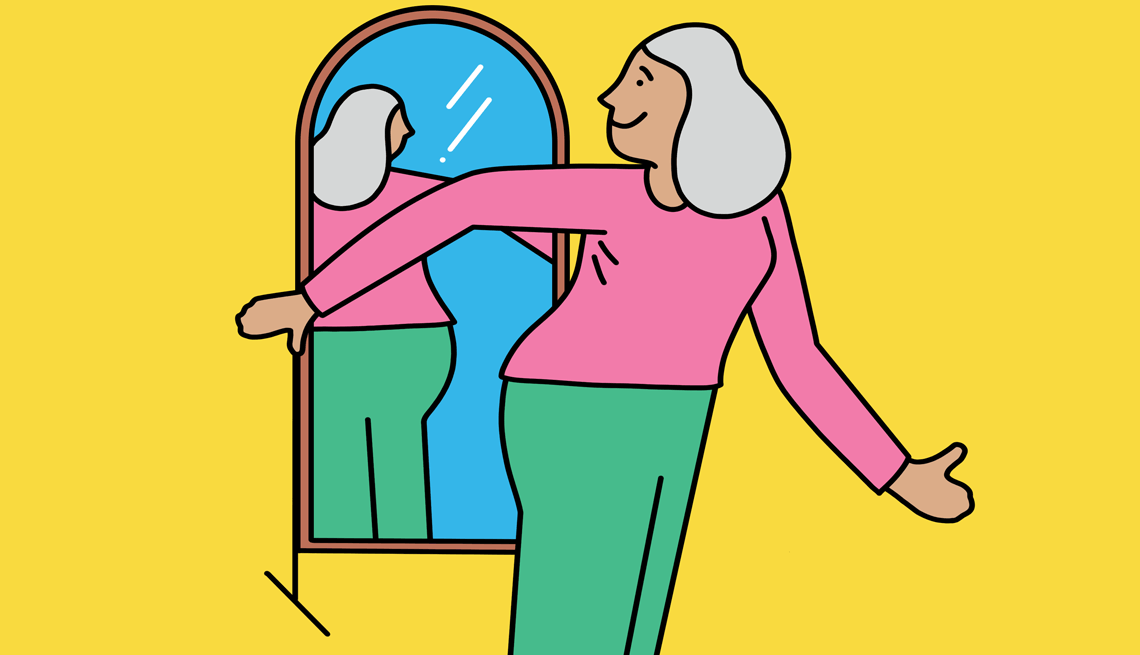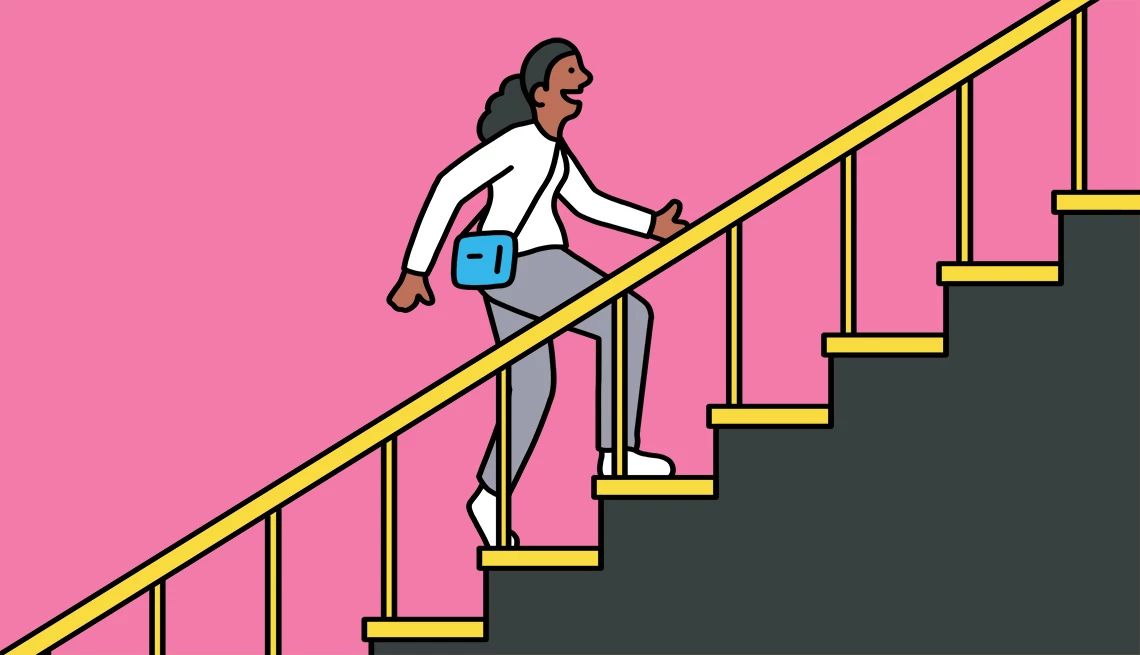AARP Hearing Center


Our butts change as we get older, and not always for the better. In fact, as University of Pennsylvania researchers discovered in 2015 after reviewing MRI scans of the gluteal regions of 185 people, butt muscles don’t just shrink as we age; they can also fray and tear. That can lead to “flabby pancake butt,” according to Bryan J. Lehecka, an associate professor in Wichita State University’s department of physical therapy. Aging isn’t the lone culprit, either. “Decreased physical activity, like too much sitting, and hormonal changes all play a role in this, especially after 50,” Lehecka says.
But getting your toned tush back isn’t just about vanity. It’s also about staying healthy as you age. Glutes, the medical term for your butt muscles, “are the anchor to your spine,” says Holly Perkins, a certified strength and conditioning specialist who has been in practice for 30 years. “It’s the muscle group that’s dominant for locomotion, meaning moving you around, going up and down stairs.”
Here are 25 ideas to help you blast those glutes and sculpt them into something that won’t just look better in a pair of jeans, but will also keep you strong and active.


AARP Membership— $12 for your first year when you sign up for Automatic Renewal
Get instant access to members-only products and hundreds of discounts, a free second membership, and a subscription to AARP the Magazine.
1. Squeeze those cheeks
Squeezing your glutes for 15 minutes a day can significantly change your posterior, according to a 2019 study published in PeerJ — the Journal of Life and Environmental Sciences. Researchers measured the hip extension and gluteal girth of 32 participants who performed different exercises for eight weeks. “Imagine trying to squeeze a $100 bill between your cheeks firm enough that nobody could pull it away,” says Lehecka, who led the study. “Over eight weeks, it increased gluteal strength by 16 percent, gluteal endurance by 11 percent, and appeared to round the shape of the gluteals.”
2. Master the glute bridge
This is a simple exercise you can do while lying on your back. With your knees bent and your feet about 24 inches away from your hips, press your hips up into the air and hold for five seconds. Release, relax and do it again. Repeat 10 times. Perkins says this exercise can be done on the laziest of days: “It’s great because if you’re over 50 and this is your first time doing the exercise, you almost can’t do it wrong. Just make sure you’re pressing your hips far enough into the air so they’re in alignment with your knees and shoulders. Don’t press any higher than that so you don’t overextend your spine.”
3. Fight back against ‘Dormant Butt Syndrome’
“Dormant Butt Syndrome” — a term coined by Chris Kolba, an Ohio State University physical therapist — is pretty much what it sounds like. “It basically describes a situation in which the glutes are not firing optimally,” Kolba says. Meaning, you’ve underused your butt muscles for so long, they’ve stopped working properly. “This can lead to compensations from other muscles working more than normal, which can ultimately contribute to reduced performance and injury,” he says. The No. 1 cause? “Too much sitting,” Kolba says. A 2024 study from Australian researchers, which looked at more than 2,000 participants over the age of 40, suggests we should be spending at least five hours a day on our feet.
4. Squat like a Bulgarian
Squats are an excellent way to tone your butt, and one of Perkins’ favorite variations is the Bulgarian split squat, named for a Bulgarian weightlifting team that popularized the exercise in the 1980s. It activates just about every muscle in your lower body, but is especially effective at targeting your quads and glutes. “This is very important for people 50 and older, because that’s when we see a stark increase in muscle loss,” Perkins says. Stand in front of a couch or bench, face away from it, and prop an elevated foot on top. “Then, with your front leg — the one not resting on the couch — dip down into a partial squat by bending the knee,” Perkins says. You’ll feel the burn right away, and your butt will thank you for it (later, probably).


5. Take the stairs
Just 2 percent of people take the stairs when there’s an elevator or escalator available, says Michael Easter, author of the New York Times bestsellers Scarcity Brain and The Comfort Crisis. But climbing stairs “can burn a surprising amount of calories,” he says. In fact, it requires about three times more energy than riding the elevator. “What’s more, taking the stairs works the muscles in your glutes, helping build and tone the muscles,” Easter adds. “If you want to take this into the gym, do step-ups with just your body weight or holding some dumbbells, or use the gym’s stair-climber machine.”
6. Do the clamshell exercise
This exercise, which is typically used in physical therapy to help with back pain and sciatica, “works the smaller muscles of the glutes, the gluteus medius, and gluteus minimus, that are often not thought of when someone thinks of toning their butt,” says Stephanie Mansour, a certified personal trainer and weight-loss coach. Lie on your side with your head resting on your lower arm and your knees bent at a 45-degree angle. Raise your upper knee as high as you can while keeping your feet touching and not moving your lower leg off the floor. If you’re a beginner, make sure you’re starting slow and maintaining form. “Keep your hips stacked and don’t let your top hip roll back,” Mansour says. “This ensures you’re targeting the right muscles.”
7. Devote three days a week to your butt
You don’t need to work your butt every day to see results. “Three times a week, with a day break between sessions, allows for better muscle recovery,” says Kristen Schuyten, a physical therapist at Michigan Medicine. But glute exercises don’t include things like standing or walking — rest day isn’t a free pass to stay horizontal all day.
8. Stop slouching
Most of us can’t avoid sitting, especially if we have desk jobs. While a 2015 study from Ball State University found that stability balls activate lower-body muscles, you probably shouldn’t replace your office chair with one unless you have an adjustable-height desk. “Stability balls are too low,” says Michele Olson, an exercise scientist at Huntingdon College in Alabama. “You can’t align your eyes and neck to your desk and computer screen.” Instead, she recommends investing in an ergonomically designed chair that “supports your lower spine and opens up your hip joint during sitting.” Better yet, focus on your posture. “Sitting upright stretches gluteal muscles, and with long-term stretching the muscles can relax and be more challenged to activate for activity/use,” Schuyten says.































































You Might Also Like
How to Build Healthy Habits
From working backwards and playing games to habit stacking, here is practical advice for permanent change
Ways to Curb Sugar Cravings
From eating a protein-packed breakfast to ‘urge surfing,’ we have tips to stop craving sweets
Tips to Get a Flatter Stomach
Extra weight in the midsection is linked to several health issues; here are ways to lose belly fat
Recommended for You